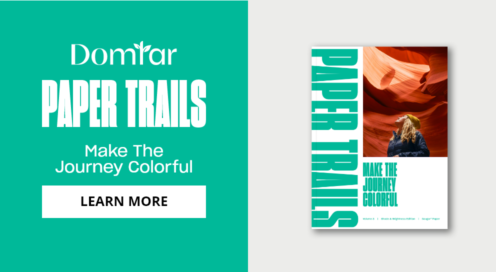Font redesigns help The Globe and Mail adapt to changing news landscape
Written by Nick Shinn RGD Emeritus, ShinntypePratt Nova is a large type family commissioned for The Globe and Mail’s 2010 redesign. The fonts, designed by Nick Shinn, have just been released for general use.
Background: 2007—Sense, Sensibility and Pratt Pro
Redesigning a newspaper will produce a circulation spike, and an upgrade to its printing presses provides the perfect occasion for doing so. In 2007 there was also another, more pressing reason for The Globe and Mail: the Internet, which had decimated the newspaper industry’s ad revenue and readership in general, but was showing some promise in the rise of online news sites.
In fact, The Globe and Mail website was burgeoning while the print paper’s circulation was holding steady, despite shrinking size due to fewer ad pages. As hot news had migrated online, the print edition was repositioned to be more magazine-like in function and appearance, with an emphasis on commentary and feature-based articles.
Editorial Art Director David Pratt was adamant in pursuing the classic modernism to which he was particularly attracted, and which he felt would best represent the new direction the paper was taking. But as he worked on the asymmetric page layouts with their copious amounts of white space, it became apparent that the one-typeface ethos of minimalist modernism, no matter the range of weights, was too restrictive. There was also the danger that the simplicity of this approach would become sterile, lacking in visual interest, especially for the more quotidien settings of dry headlines unaccompanied by photographs or illustrations.
Pratt’s solution was to commission two stylistic variants of one typeface, to provide flexibility in colour and layout. These two variants were Sense and Sensibility. Designed as the poles of a stylistic opposition within the sans-serif genre, I contrasted an elaborate, humanist, calligraphically-informed execution (Sensibility) with stripped-down modernism (Sense, with the flavour of Futura).
Named after the man, 'Pratt Pro' became the new seriffed text face. It followed the 'humanist' style of the main headline face of The Globe and Mail — i.e. old style, which is unusual for a news text font. The idea is that modernist structure is enhanced by subtle organic texture, similar to the architectural approach whereby “beton brut” concrete surfaces may be imprinted with the textures of their wooden moulds to offset the brutalist tendencies of modernism.
Being somewhat of a contrarian, I had previously questioned the worldwide absence of old-style types from newspaper body text. It seemed strange given that the old style, from Jenson to Minion, is generally considered optimal for extended reading in books and magazines. My first foray into designing an old-style news text face had been a Jenson adaptation, Goodchild, which I developed in 2002, pumping up its x-height for Tony Sutton of News Design Associates. It was this that led to my suggestion that the font to replace Utopia, which The Globe and Mail was then using for text, should be an old style, and that fit right in with David Pratt’s plans. The subsequent typeface was informed by my experiments with Goodchild, and also those classic, funky, mid-20th century German humanist styles which I had long admired, Palatino and Trump Mediæval.
Pratt is an economical typeface with small, quite narrow capitals that are shorter than the ascenders, and a lower case which produces a lively profile at the x-height. The design is notable for its simplicity at the level of the letter (e.g. no serif on the crossbar of E) coupled with complexity of detail (e.g. a mixture of curved and angled serif brackets). It was optimized for the setting of The Globe and Mail: 9 pt. size on 9½ pt. leading, rag right on a 10 pica column, and benchmarked against Utopia for character count.
2010: Pratt Nova
In 2010, the paper took a further step towards the magazine aesthetic, with the introduction of coated stock. New Art Director Adrian Norris focused on a strategy of “Proudly Print”, leveraging the attributes of fine printing that are beyond screen resolution, focusing on the vast expressive range that is possible within a single serif typeface. Sense and Sensibility were relegated to an occasional supporting role, while Pratt was developed into Pratt Nova, with a range of optical sizes from Fine (used in the Style section and Style Advisor magazine supplement) to text, and weights from Light to a massive slab, Pratt Nova Black—very necessary for strong headlines, in the absence of sans.
Slabs were all the rage. I experimented by interpolating Pratt Nova Black with the Regular weight, and came up with Pratt Nova Heavy, an alternate to the existing high contrast Bold. The Heavy proved to be extremely useful, and is now put to work throughout the paper, at many sizes, all caps and U&lc.
One advantage of The Globe and Mail's predominantly serif typography is that the vast majority of ads feature sans serif fonts, so there is a clear distinction between editorial and advertising content.
As we had first done with the Walbaum typeface in 2000, the optically-sized designs were again developed in tandem with the new layouts, utilizing press tests to fine-tune the fonts to the size at which they would be used. This was critical, as there is a ridiculous amount of press gain on newsprint. It's essential to be aware of the difference between a laser proof, sharp, dense black on bright white stock and a newsprint proof, tantamount to grey ink on grey blotting paper.
The prototype layouts, incorporating the prototype fonts, were tested on focus groups. At this stage of the design process the fonts were incomplete and unfinished, containing only what was necessary (no accented characters, for instance) to produce a convincing setting. Feedback from the focus group was collected by the Globe and incorporated into their revisions for the design. This is how the need for the Heavy weight (Bold slab) emerged.
In conceptualizing a two-sans system with a matching serif face, it had been David Pratt’s intention to provide the teams who design the paper on a daily basis with a large toolbox that would enable expressive, stylistic and functional variety within the structures of a rigorous style guide, day in, day out, through thousands of pages a year. This philosophy was continued by Adrian Norris and his assistant Devin Slater (now Design Director at The Globe and Mail), with the addition of Pratt Nova and its substantial family, including a set of Bold Italic Swash Capitals.
The Globe Today
As a daily reader of the paper there are two things I've noticed about the use of the typeface since 2010. Firstly, the figures (numerals) are getting a lot of play. This can be seen in the Sports section where stats are listed and through the 'listicle' culture of today's content in general. Put it down to the fact that they look good huge, and the lining figures are harmonized with the upper case, so that an all-cap setting with figures looks very smooth. Secondly, the tone and style of the typography in the Saturday 'Globe Style' has been quite fluid and evolutionary over time, which has been facilitated by the great range of styles in the Pratt Nova family.
Pratt Nova for General Use
When developing a general use version for a custom font, more languages need to be added as well as OpenType features. For instance, The Globe and Mail does not use small caps or superior characters and figures, but these elements are required for a high-quality retail text face and needed to be added to the Text fonts. Additionally, The Globe and Mail requires only the basic Latin script encoding (Western European, covering Canada's official languages), but European Latin Script coverage (including Polish, Slovakian, Turkish, etc.) is provided in all Shinntype fonts published since 2005.
Interested in submitting a case study to appear on the RGD website? Download 'Guidelines for Contributing Content' and email news@rgd.ca.

Nick Shinn RGD Emeritus
Shinntype
Building on his experience as an art director and graphic designer in the 1980s and 90s—and as a pioneer of digital media—Nick launched the Shinntype foundry in 1998. The foundry now presents a rich and eclectic catalogue of unique fonts, tailored to contemporary taste.
Nick’s typefaces are on view daily in The Globe and Mail, for which he designed all the fonts.
Tags
Related Articles


Zoë Boudreau Associate RGD, Loren Aytona Arena Associate RGD, Claudia Yuen


Julian Brown RGD


Subplot Design Inc., Matthew Clark RGD, Roy White RGD










